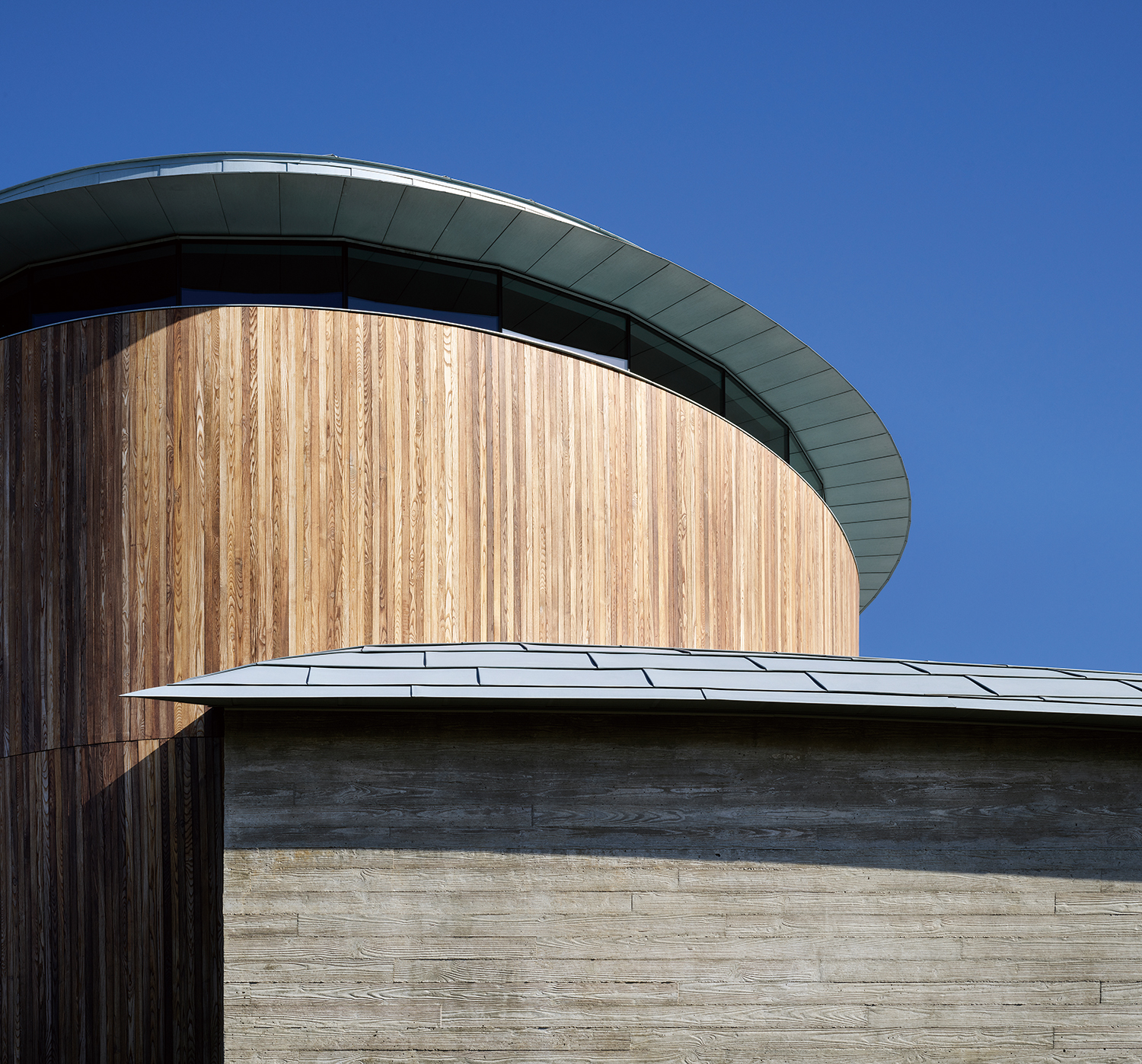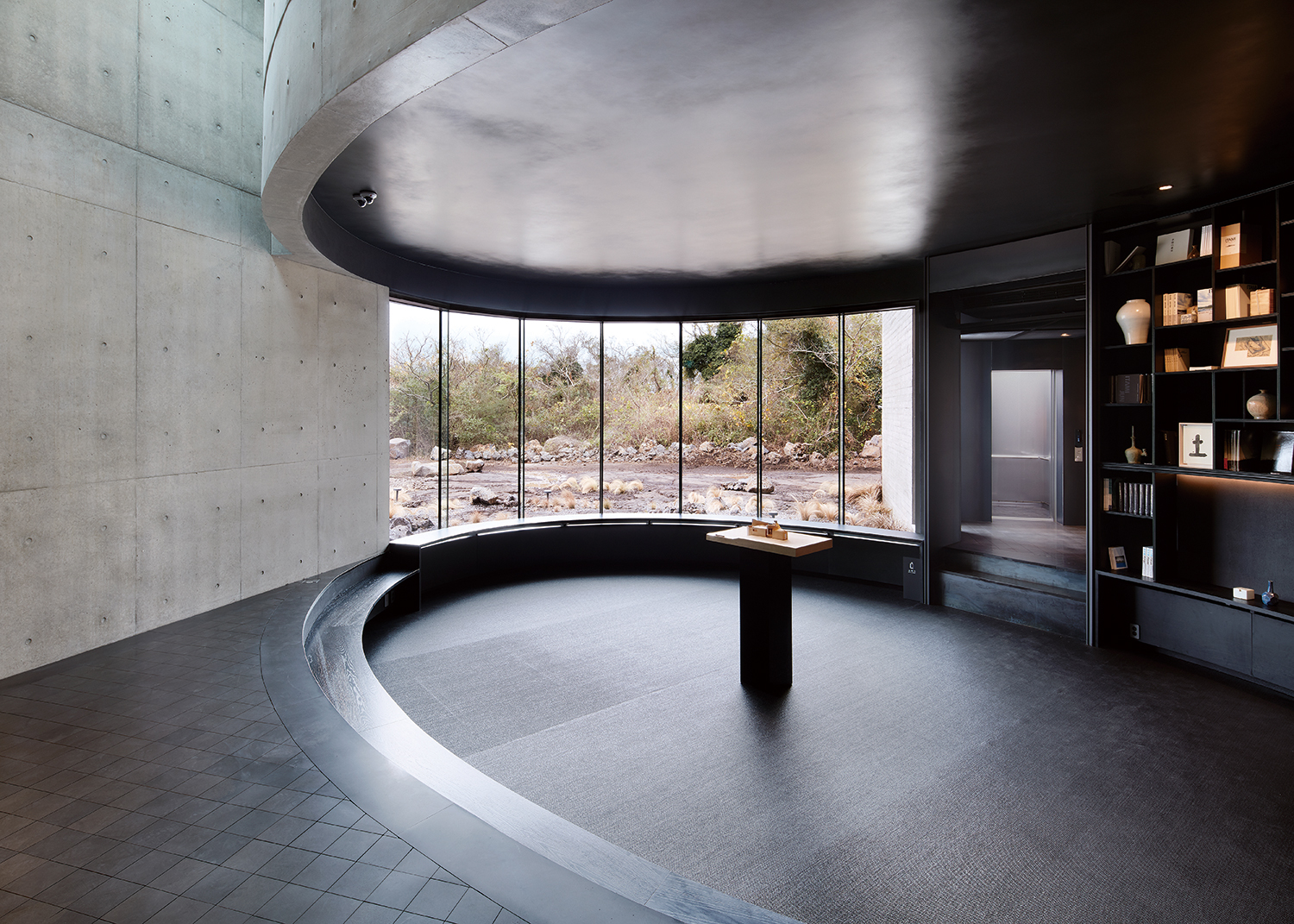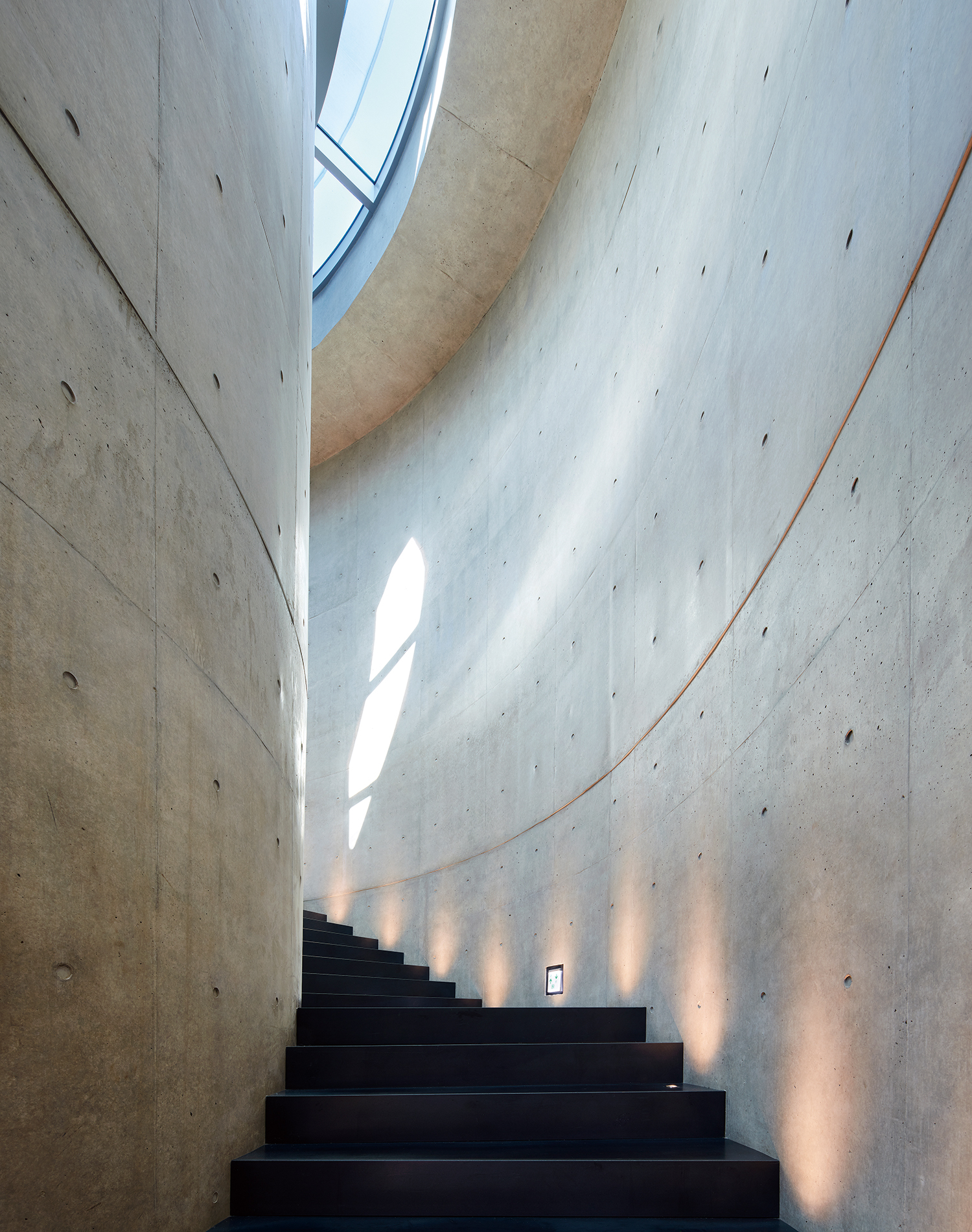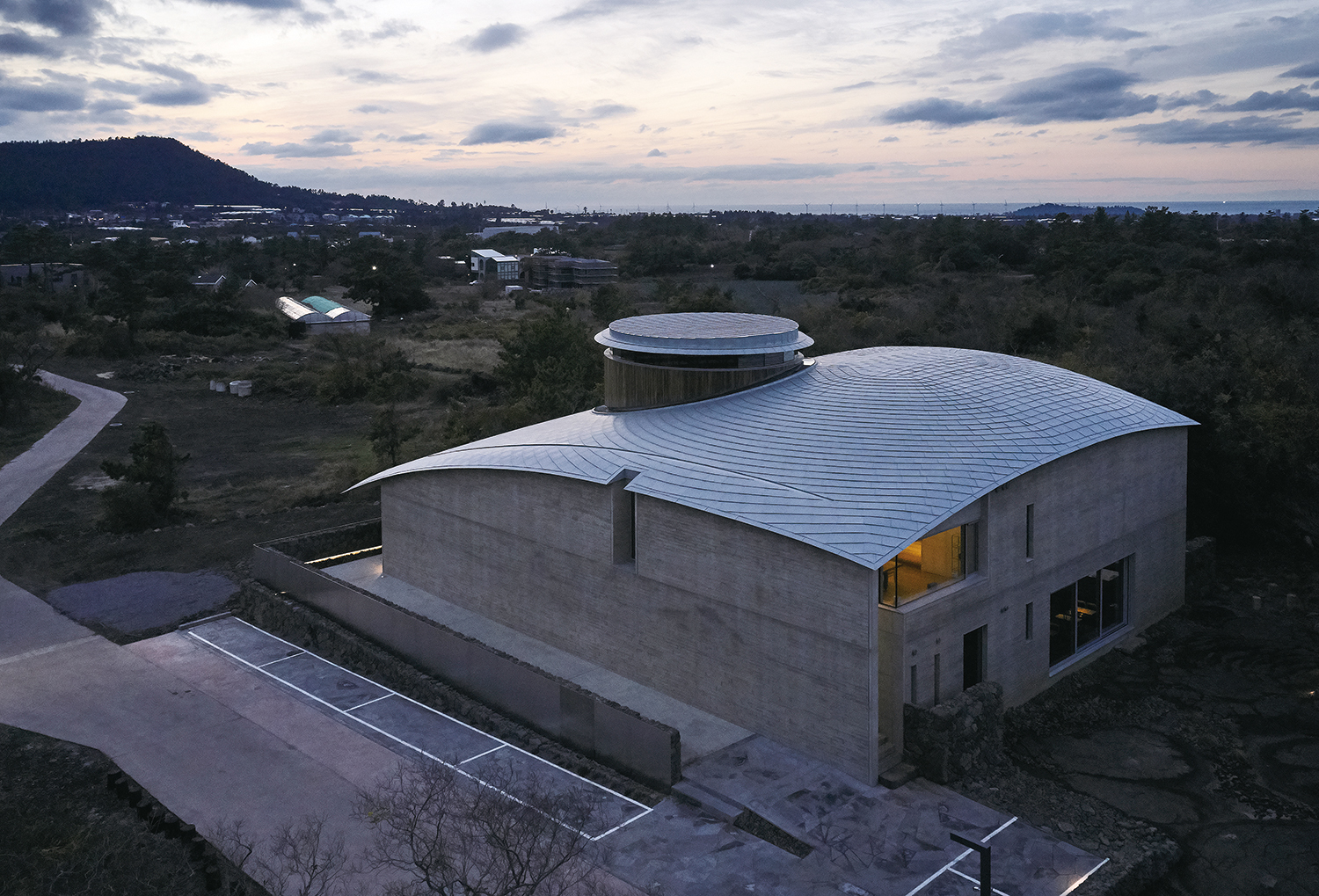SPACE January 2024 (No. 674)

Breathing Architecture
As a living organism, architecture gains vitality through its relationships with humans, nature, and the urban environment, which I often conceive of as analogous breathing. We use the expression ‘breathing’ in relationships between people, referring to close and intimate relationships. This is similar to the phrase ‘breathing in unison’ when talking about teamwork to achieve a certain goal. Architecture can never exist as an independent organism. Its value and its reason for existence arises through relationships with humans and the surrounding environment. Assuming that breathing is essential to life, the breathing that flows between architecture and the environment, and between humans and architecture, must be well balanced and steady to maintain a healthy life. Just as we involuntarily inhale and exhale air, only when all relationships resemble the flow of air will we feel stability and comfort within architecture.
The Attitude of an Architect
The answer to the question ‘What kind of influence does architecture have culturally and socially?’ is informed by the attitude of the architect. Musicians and singers often suggest that their bodies are an instrument; when comparing architects to musicians, a building itself can never be a main character like an object can, just as the instrument itself cannot be a main character. Architects are merely instruments, leaving beautiful music to the world through architecture. At this time, the attitude the architect must take varies greatly depending on the situation. As an example of this, I would like to mention the ITAMI JUN Museum (2022). Built in Jeju, this museum commemorates the architectural ideas and philosophy of the late architect Itami Jun. In addition to showcasing the architectural works of Itami Jun, the museum was designed as an exhibition space for contemporary artists working across various fields inspired by the spirit of the times, considering that he was an all-round artist who worked as a painter and poet during his lifetime. As this was an art museum named after the architect, it was designed with a thorough understanding of Itami Jun’s philosophy and thoughts. However, no matter how conscious the design was of his ideas, the results were affected by the designers’ own aesthetic. This is due to the fact that the architect’s design habits are inevitably expressed somewhere in their architecture or interior designs. So, one must also address ‘the balance between authorship and the function of architecture’. The attitude of architects concerning what is expected of them varies widely depending on social needs and functions.


Nature and Architecture
For architects, the attitude towards the environment in which the building will be located is very important. Architecture is a process of numerous decisions returned to and reiterated from the planning stage to the final stage of construction completion. An architect’s attitude towards a buildings’ relationship with nature influences the decision-making design process at every moment. Throughout his later projects, Itami Jun intended architecture to be a ‘medium between humans and nature’, and as a result projects such as Water, Wind, Stone Art Museums (2006) and Bangju Church (2009) received international recognition. He emphasised ‘harmony with the environment’ and ‘conformity’, stating that architects should be humble when dealing with the land. Absorbing my father’s philosophies, I also instinctively try not to go against the conditions of a particular environment or landscape when encountering it. Sihojae (2023) is a result of these inherent philosophies. When designing Sihojae, I tried to permeate the landscape, taking in and conforming with the site’s surroundings, forming an organic relationship. This design methodology is deeply engraved unconsciously, like our DNA, and is based on a highly trained critical process. Therefore, architects can add layers by repeating the designs based on intuition. This intuition can become a force that encompasses the various physical elements that make up a work of architecture.
The stream of consciousness that guides this attitude exists both at macro and micro-scales, when architecture establishes a relationship with the environment and the urban landscape, and in interfaces when humans and nature meet in the interior spaces. To me, nature encompasses a scenic landscape, a nearby garden, the sky, light, or the wind. It is refers to the moments that arise from the encounters between nature and humans, such as how to project the sky or bring light into both the building exterior and interiors, or how to balance a sense of borrowed scenery and its backgrounds.
Contextual Rationality
It is impossible to pursue absolute rationality when designing buildings. Architects make their own choices in the context of an environment, the history and culture of an area in which the building they are designing will belong. Within a limited time and budget, each person pursues their own contextual rationality while making decisions based on intuition derived from their own aesthetic sense. There is no perfect answer. This is because any outcome depends on how seriously and sincerely each person engages with the work while remaining faithful to social responsibilities and functions within the existing conditions of the land. This is a virtue required of any architect.
Over the last 22 years operating ITM YOOEHWA ARCHITECTS (previously ITAMI JUN Architect a Research Institute in Seoul), not one project has had a similar context. Each building had to be designed specifically for the location, and new challenges and difficulties coexisted at every moment. Earlier I compared an architect’s design process to a musician’s performance. The architect subdivides the design through countless repeated phrases and elaborate articulations to create the poetic moment that he wants to perform through architectural form. As each piece of music is interpreted differently by different musicians, architectural results vary according to an architect’s interpretation of a site and his design methods. In this way, tacit knowledge gained through experiences which are difficult to express verbally or in writing, may undergo a social process by which it becomes clearer or more useful.
Authorship and Originality
Continual engagement with training is necessary to maintain the sense of authorship and originality of an architect. This is because architects must come forth and meet every uncertain circumstance to achieve an acceptable form through the exercise of their intuition and consideration of context while also devising a complex structural situation. At the same time, they must create their own philosophy and language and steadily develop their own aesthetic sense in consideration of the times. It is only then that they will develop an originality through intuition, and feel that they are growing through their training process. Architecture that does not exist as an object, but creates value through a healthy relationship with its society and environment, reflecting human nature and culture. We aim to pursue a beneficial architecture that reflects our times.







